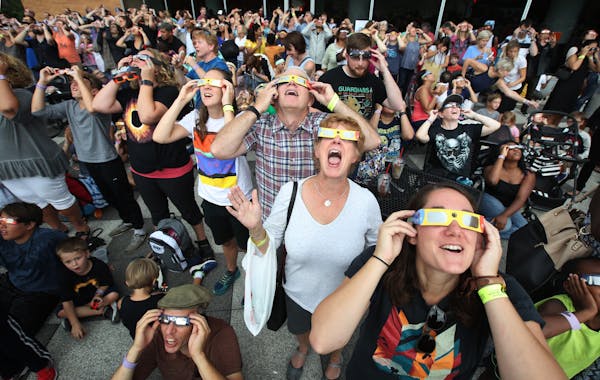Cloudy and gloomy conditions that gripped the Twin Cities over the weekend hung around and spelled bad news for anybody here who hoped to see Monday's solar eclipse.
Minnesota is not in the path of totality where the entire sun will be blocked by the moon for about three to four minutes. But nearly three-quarters of the sun will be covered in the Twin Cities at the peak of the eclipse at 2:02 p.m., rising to nearly 80% across southeastern Minnesota, according to NASA.
But the clouds never cleared. The National Weather Service gives the Twin Cities only a 19% chance of seeing any part of the first total eclipse in the United States since 2017. The chances were worse farther to the north, with a less than 10% chance in places such as Fargo and Grand Forks, N.D., and just 1% in Duluth and International Falls.
Locally, the Science Museum of Minnesota and the University of Minnesota's Bell Museum hosted eclipse activities throughout the day, whether clouds shroud the celestial phenomena or not. Dakota County Parks hosted a viewing party at Schaar's Bluff in Spring Lake Park Reserve in Hastings.
Network TV also showed images of the eclipse, which started about 12:10 p.m. in southern Texas, then moved across Texas into the Ohio River Valley and culminated in the northeast.
In 2017, more than 215 million people viewed the last solar eclipse in person or electronically. More could watch this time as this year's eclipse is "more exciting due to differences in the path, timing, and scientific research."
NASA has put together a table to show how much of the eclipse you can see and where, weather permitting,
Trucker was watching Netflix on phone when he caused highway crash that killed couple, charges say

Democratic Sen. Nicole Mitchell returns to work at Minnesota Capitol after burglary charge

Supporters rally at courthouse as Minnesota state trooper appears for murder hearing
New State Patrol chief opens up about adding women to ranks and fretting over having teen driver at home



